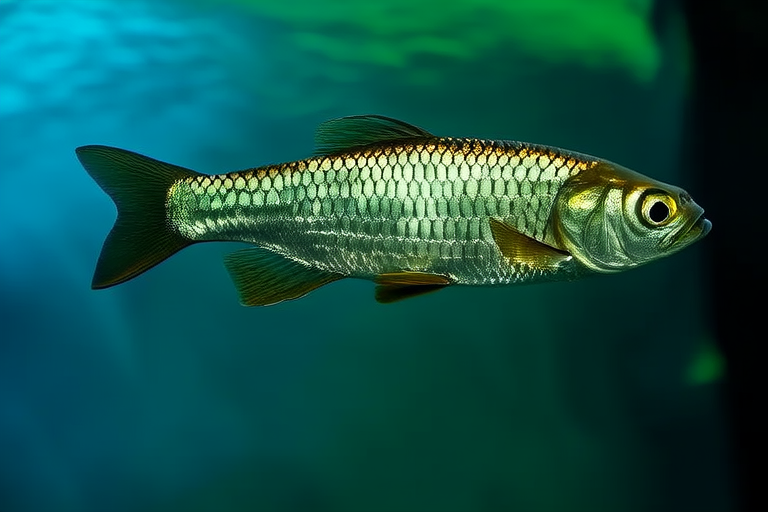From River to Aquarium: The Majestic Journey of Arowana
The arowana, a species renowned for its ancient lineage and regal presence, has captivated aquarists and nature enthusiasts alike for centuries. Native to the rivers and wetlands of Southeast Asia, South America, and Africa, these fish are not only a marvel of evolution but also a symbol of resilience and adaptability. This article delves into the fascinating world of arowanas, exploring their origins, unique characteristics, and the challenges they face in both their natural habitats and aquariums.
Origins and Natural Habitat
Arowanas have been swimming through the waters of tropical regions for millions of years. Their origins trace back to the prehistoric era, making them one of the oldest fish species still in existence today. Found primarily in the Amazon Basin, the Mekong Delta, and parts of Indonesia, arowanas thrive in the warm, nutrient-rich waters of these river systems. These habitats provide the perfect environment for their growth and survival, characterized by dense vegetation, submerged roots, and clear water.
The rivers that arowanas call home are teeming with life, offering a rich tapestry of biodiversity. They are apex predators, feeding on a variety of prey, including insects, crustaceans, and smaller fish. Their presence in these ecosystems is crucial for maintaining the balance of aquatic life, making them vital indicators of the health of their environments.
Unique Physical Characteristics
Arowanas possess several unique features that set them apart from other fish species. One of the most striking aspects is their elongated bodies, which can grow up to three feet in length. Their scales are large, thick, and shiny, providing excellent protection against potential threats. Another remarkable feature is their ability to leap out of the water to catch flying insects, a behavior known as “surface feeding.”
These fish are also distinguished by their pectoral fins, which are long and strong, enabling them to maneuver gracefully through the water. Their eyes are large and forward-facing, providing exceptional binocular vision, which aids in hunting and navigation. The combination of these attributes makes arowanas not only formidable hunters but also visually stunning creatures.
Behavior and Significance in Nature
In their natural habitats, arowanas exhibit complex social behaviors. They are generally solitary or live in small groups, establishing territories within their chosen stretches of river. During breeding season, males construct floating nests made of bubbles and plant debris, where they incubate and protect the eggs until they hatch. This parental care is rare among fish species and underscores the arowana’s role as a keystone species in its ecosystem.
The significance of arowanas extends beyond their ecological roles. In many cultures, particularly in Southeast Asia, they are considered symbols of good fortune and prosperity. This cultural reverence adds another layer of complexity to the conservation efforts aimed at protecting their wild populations.
Challenges in Natural Habitats
Despite their adaptability, arowanas face numerous challenges in their natural habitats. Environmental changes such as deforestation, pollution, and overfishing have severely impacted their populations. The construction of dams and the alteration of river courses disrupt the flow of nutrients and spawning grounds, further endangering their survival.
Additionally, the illegal wildlife trade poses a significant threat to arowanas. Their high value in the ornamental fish market and as cultural symbols has led to rampant poaching. This has pushed some species to the brink of extinction, necessitating stringent conservation measures.
Adaptation to Aquarium Settings
For those who wish to bring a piece of the wild into their homes, arowanas have become popular choices for aquariums. However, their care requires careful consideration and dedication. When setting up an arowana tank, it is essential to replicate their natural environment as closely as possible.
The ideal tank size for arowanas is at least 300 gallons, providing ample space for them to swim and display their natural behaviors. Water temperature should be maintained between 78°F and 84°F, simulating the tropical conditions they are accustomed to. Proper filtration and aeration are crucial to ensure water quality, as arowanas are sensitive to pollutants.
Dietary needs are another important aspect of arowana care. In captivity, they require a varied diet consisting of live or frozen foods like feeder fish, shrimp, and insects. Regular feeding schedules and appropriate portion control help maintain their health and prevent obesity.
Conservation Efforts and Responsible Ownership
The conservation of wild arowana populations is paramount for preserving biodiversity and cultural heritage. Various organizations and governments have implemented protective measures, including breeding programs and strict regulations on fishing and trade. Supporting these initiatives and choosing sustainably sourced fish are steps towards ensuring the survival of this majestic species.
For those who choose to keep arowanas as pets, responsible ownership is key. This involves understanding the fish’s specific needs and committing to providing the best possible care. Additionally, educating oneself about the legal and ethical implications of owning exotic pets contributes to the broader goal of conservation.
Conclusion
The journey of arowanas from their natural river habitats to aquariums showcases their resilience and adaptability. From their prehistoric origins to their current status as prized pets and cultural icons, arowanas continue to inspire awe and admiration. By learning more about these magnificent creatures and taking steps to conserve their wild populations, we can ensure that future generations will have the opportunity to appreciate their beauty and grace.
